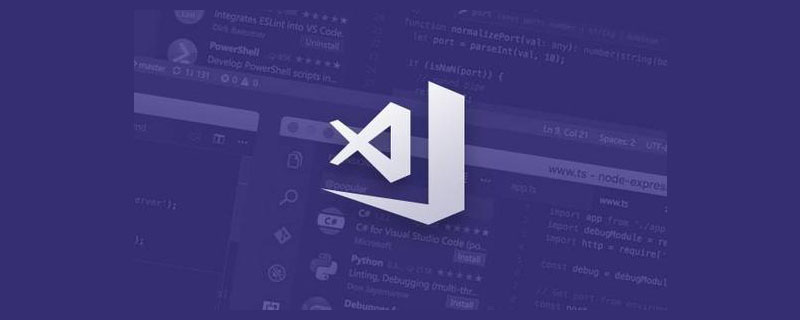 Backend Development
Backend Development PHP Tutorial
PHP Tutorial Interface design and user experience for developing real-time chat function in PHP
Interface design and user experience for developing real-time chat function in PHP
Interface design and user experience of developing real-time chat function in PHP
In the context of today’s information age, real-time chat has become one of the important ways for people to communicate in daily life one. As developers, we can use PHP to develop real-time chat functions and improve user experience through good interface design and user experience. This article will introduce the interface design and user experience of developing real-time chat function in PHP, and attach some code examples.
Interface design is one of the keys to achieving a good user experience. When designing the real-time chat interface, we should pay attention to the following points:
- Clear and concise interface: The real-time chat interface should be kept simple and clear as much as possible to avoid too much visual interference. The layout and style of the chat window can be designed using a lightweight CSS framework or custom CSS styles.
- Display chat records in groups: Display chat records in groups according to time or chat objects, allowing users to quickly locate and view historical messages.
- Display of multi-person chat: If it is a multi-person chat scenario, you can use column display or message bubbles to display the content of multi-person chat, so that users can clearly distinguish the speeches of different people.
- Design of the input box: The input box is the key for users to initiate chats. It should be designed in an easy-to-use form and provide some auxiliary functions during input, such as emoticons, file uploads, etc.
The following is a simple PHP code example to implement basic real-time chat function:
<?php
// 连接数据库
$conn = mysqli_connect("localhost", "user", "password", "chat_database");
if (!$conn) {
die("连接数据库失败:" . mysqli_connect_error());
}
// 获取用户提交的聊天内容
$text = $_POST['text'];
$user = $_POST['user'];
// 将聊天内容保存到数据库
$sql = "INSERT INTO chat_messages (user, text) VALUES ('$user', '$text')";
mysqli_query($conn, $sql);
// 查询最近的聊天记录
$sql = "SELECT * FROM chat_messages ORDER BY id DESC LIMIT 10";
$result = mysqli_query($conn, $sql);
$messages = mysqli_fetch_all($result, MYSQLI_ASSOC);
// 将聊天记录显示在页面上
foreach ($messages as $message) {
echo "<div class='message'>";
echo "<span class='user'>" . $message['user'] . ": </span>";
echo "<span class='text'>" . $message['text'] . "</span>";
echo "</div>";
}
?>The above code is a simple example and needs to be improved during actual development. Logic to handle user input and database operations. At the same time, we can also add more functions according to specific needs, such as message notifications, online status display, etc.
When users use the chat function, what they care most about is the immediacy and stability of the chat. To ensure these two points, we can use Websocket technology to achieve real-time communication. By using PHP's websocket library, we can implement real-time chat functionality to provide a better user experience.
Through the above interface design and code examples, we can initially complete the interface design and user experience of developing real-time chat function in PHP. Of course, this is just a basic example, and actual development needs to be adjusted and optimized according to needs. I hope the content of this article can be helpful to the interface design and user experience of developing real-time chat functions in PHP.
The above is the detailed content of Interface design and user experience for developing real-time chat function in PHP. For more information, please follow other related articles on the PHP Chinese website!
 微信小程序中PHP开发的翻页特效实现方法Jun 01, 2023 pm 01:51 PM
微信小程序中PHP开发的翻页特效实现方法Jun 01, 2023 pm 01:51 PM在微信小程序中,PHP开发的翻页特效是非常常见的功能。通过这种特效,用户可以轻松地在不同的页面之间进行切换,浏览更多的内容。在本文中,我们将介绍如何使用PHP来实现微信小程序中的翻页特效。我们将会讲解一些基本的PHP知识和技巧,以及一些实际的代码示例。理解基本的PHP语言知识在PHP中,我们经常会用到IF/ELSE语句、循环结构,以及函数等一些基本语言知识。
 微信小程序中PHP开发的常用工具库介绍Jun 01, 2023 pm 07:40 PM
微信小程序中PHP开发的常用工具库介绍Jun 01, 2023 pm 07:40 PM随着微信小程序的普及和发展,越来越多的开发者开始涉足其中。而PHP作为一种后端技术的代表,也在小程序中得到了广泛的运用。在小程序的开发中,PHP常用工具库也是很重要的一个部分。本文将介绍几款比较实用的PHP常用工具库,供大家参考。一、EasyWeChatEasyWeChat是一个开源的微信开发工具库,用于快速开发微信应用。它提供了一些常用的微信接口,如微信公
 如何利用PHP开发商城的满额赠礼功能May 22, 2023 am 10:02 AM
如何利用PHP开发商城的满额赠礼功能May 22, 2023 am 10:02 AM网上购物已经成为人们日常生活中不可或缺的一部分,因此,越来越多的企业开始关注电商领域。开发一款实用、易用的商城网站也成为了企业提高销售额、拓展市场的必要手段之一。在商城网站中,满额赠礼功能是提高用户购买欲望和促进销售增长的重要功能之一。本文将探讨如何利用PHP开发商城的满额赠礼功能。一、满额赠礼功能的实现思路在商城开发中,如何实现满额赠礼功能呢?简单来说就是
 微信小程序中PHP开发的加密和解密实现方法Jun 01, 2023 am 08:12 AM
微信小程序中PHP开发的加密和解密实现方法Jun 01, 2023 am 08:12 AM随着微信小程序在移动应用市场中越来越流行,它的开发也受到越来越多的关注。在小程序中,PHP作为一种常用的后端语言,经常用于处理敏感数据的加密和解密。本文将介绍在微信小程序中如何使用PHP实现加密和解密。一、什么是加密和解密?加密是将敏感数据转换为不可读的形式,以确保数据在传输过程中不被窃取或篡改。解密是将加密数据还原为原始数据。在小程序中,加密和解密通常包括
 PHP开发中提供效率的VSCode插件推荐(值得收藏)Mar 30, 2021 pm 07:31 PM
PHP开发中提供效率的VSCode插件推荐(值得收藏)Mar 30, 2021 pm 07:31 PM本篇文章给大家推荐一些VSCode+PHP开发中实用的插件。有一定的参考价值,有需要的朋友可以参考一下,希望对大家有所帮助。
 微信小程序中PHP开发的状态码和错误处理方法May 31, 2023 pm 07:52 PM
微信小程序中PHP开发的状态码和错误处理方法May 31, 2023 pm 07:52 PM作为目前最流行的社交媒体平台之一,微信已经成为了企业和个人互动沟通的重要渠道之一。而微信小程序则更加方便用户使用和开发者创新。在小程序开发中,PHP是一种重要的后端技术,但是在开发过程中很容易出现状态码和错误处理方面的问题。本文将介绍微信小程序中PHP开发的各种状态码和错误处理方法。一、微信小程序中的状态码在微信小程序中,HTTP状态码(HTTPStatu
 微信小程序中PHP开发的文本框自动完成功能实现方法Jun 01, 2023 pm 07:42 PM
微信小程序中PHP开发的文本框自动完成功能实现方法Jun 01, 2023 pm 07:42 PM随着微信小程序的普及,各类开发需求也日渐增多。其中,文本框自动完成功能是小程序中常用的功能之一。虽然微信小程序提供了一些原生的组件,但是有一些特殊需求还是需要进行二次开发。本文将介绍如何使用PHP语言实现微信小程序中文本框自动完成功能。准备工作在开始开发之前,需要准备一些基本的环境和工具。首先,需要安装好PHP环境。其次,需要在微信小程序后台获取到自己的Ap
 微信小程序中PHP开发的滑动验证码实现方式Jun 01, 2023 pm 09:01 PM
微信小程序中PHP开发的滑动验证码实现方式Jun 01, 2023 pm 09:01 PM随着互联网的快速发展,网络安全问题也变得越来越严峻。针对恶意攻击、刷单等安全威胁,很多网站和应用程序都使用了验证码来保护用户信息和系统安全。在微信小程序中,如何实现一个安全可靠的滑动验证码呢?本文将介绍使用PHP开发的滑动验证码实现方式。一、滑动验证码的原理滑动验证码是指在验证用户身份时,通过用户在滑块上滑动完成验证过程。其原理是将一张图片分成两部分,一部分


Hot AI Tools

Undresser.AI Undress
AI-powered app for creating realistic nude photos

AI Clothes Remover
Online AI tool for removing clothes from photos.

Undress AI Tool
Undress images for free

Clothoff.io
AI clothes remover

AI Hentai Generator
Generate AI Hentai for free.

Hot Article

Hot Tools

WebStorm Mac version
Useful JavaScript development tools

SublimeText3 Mac version
God-level code editing software (SublimeText3)

SublimeText3 Chinese version
Chinese version, very easy to use

Safe Exam Browser
Safe Exam Browser is a secure browser environment for taking online exams securely. This software turns any computer into a secure workstation. It controls access to any utility and prevents students from using unauthorized resources.

Dreamweaver Mac version
Visual web development tools





